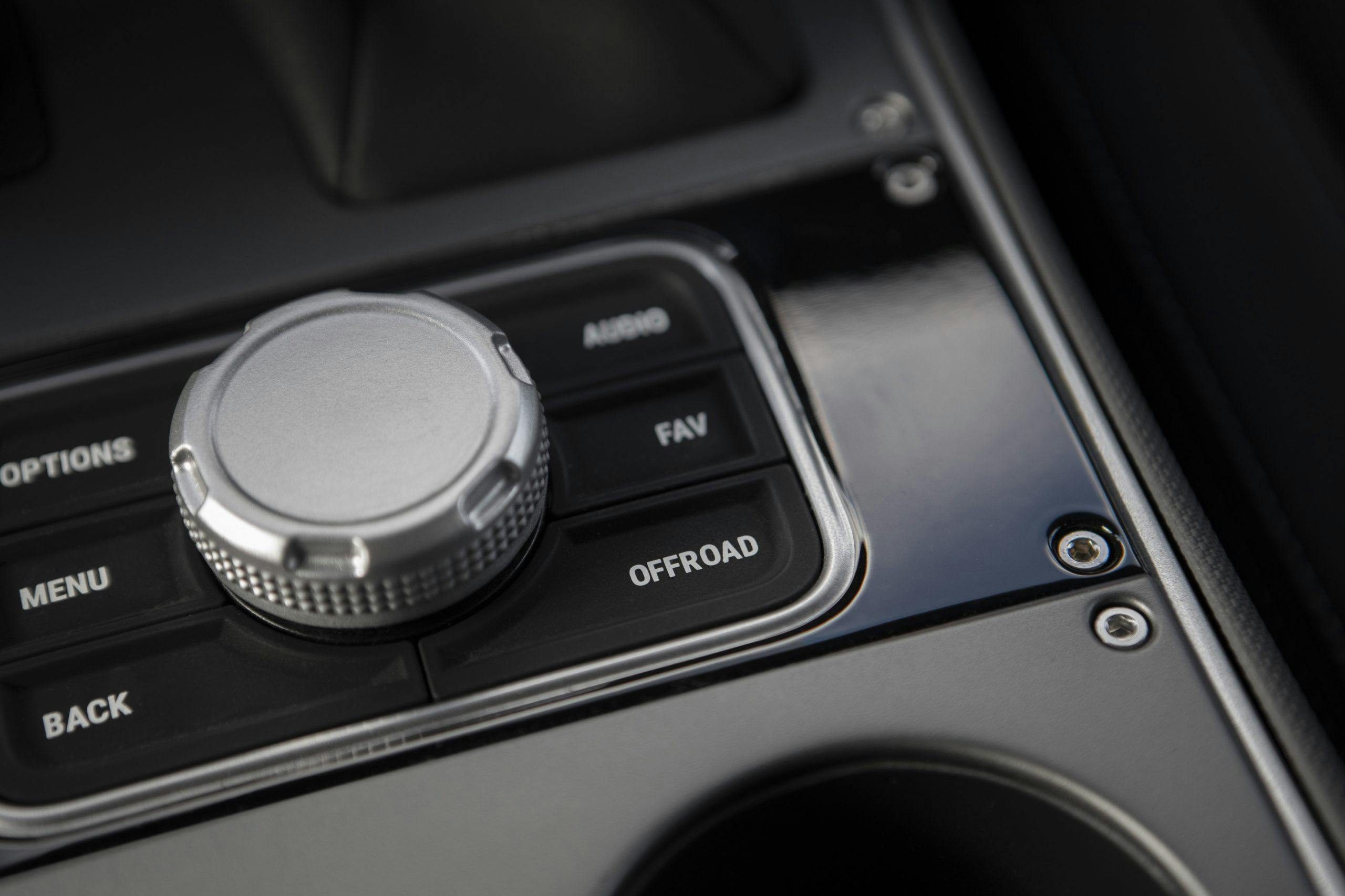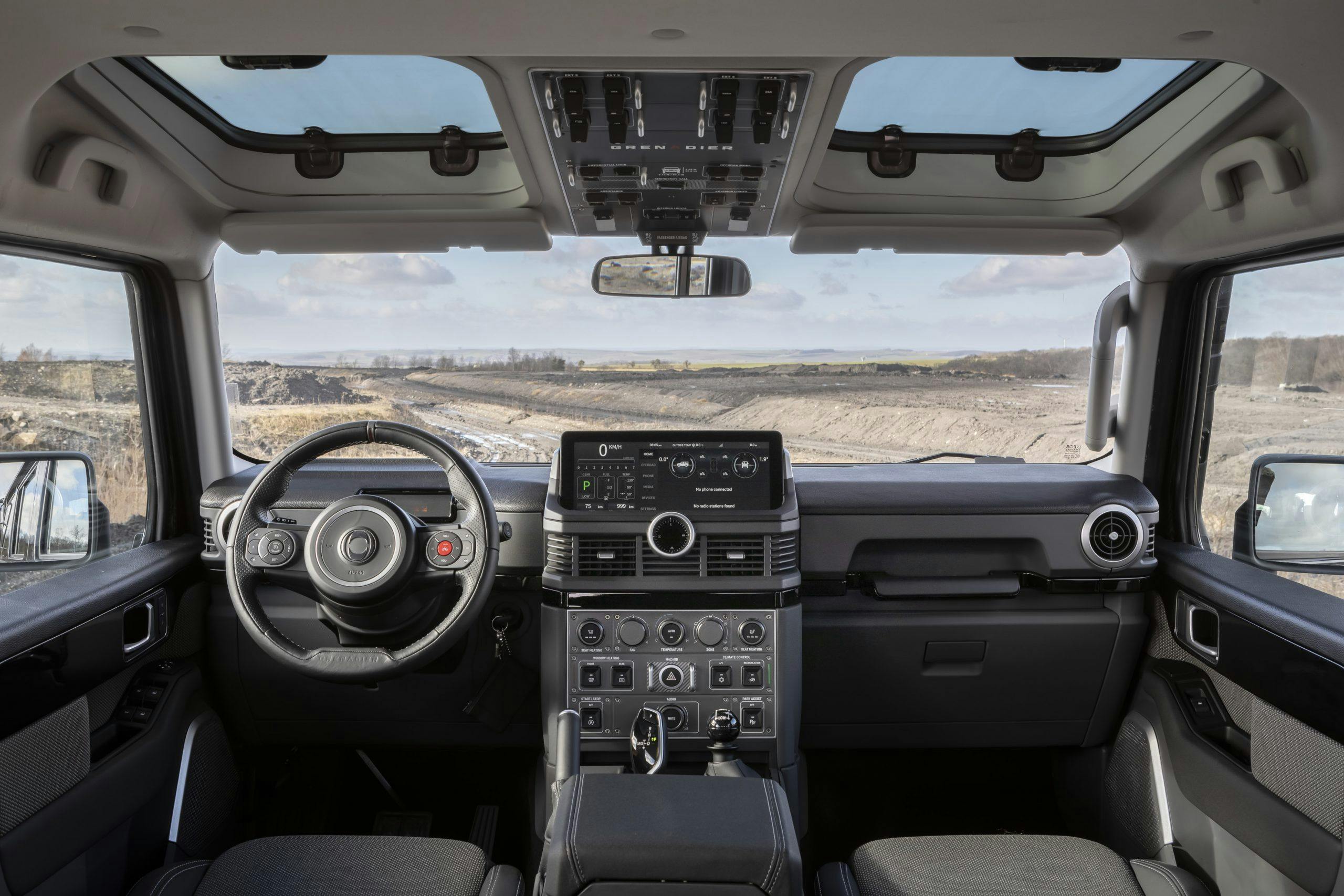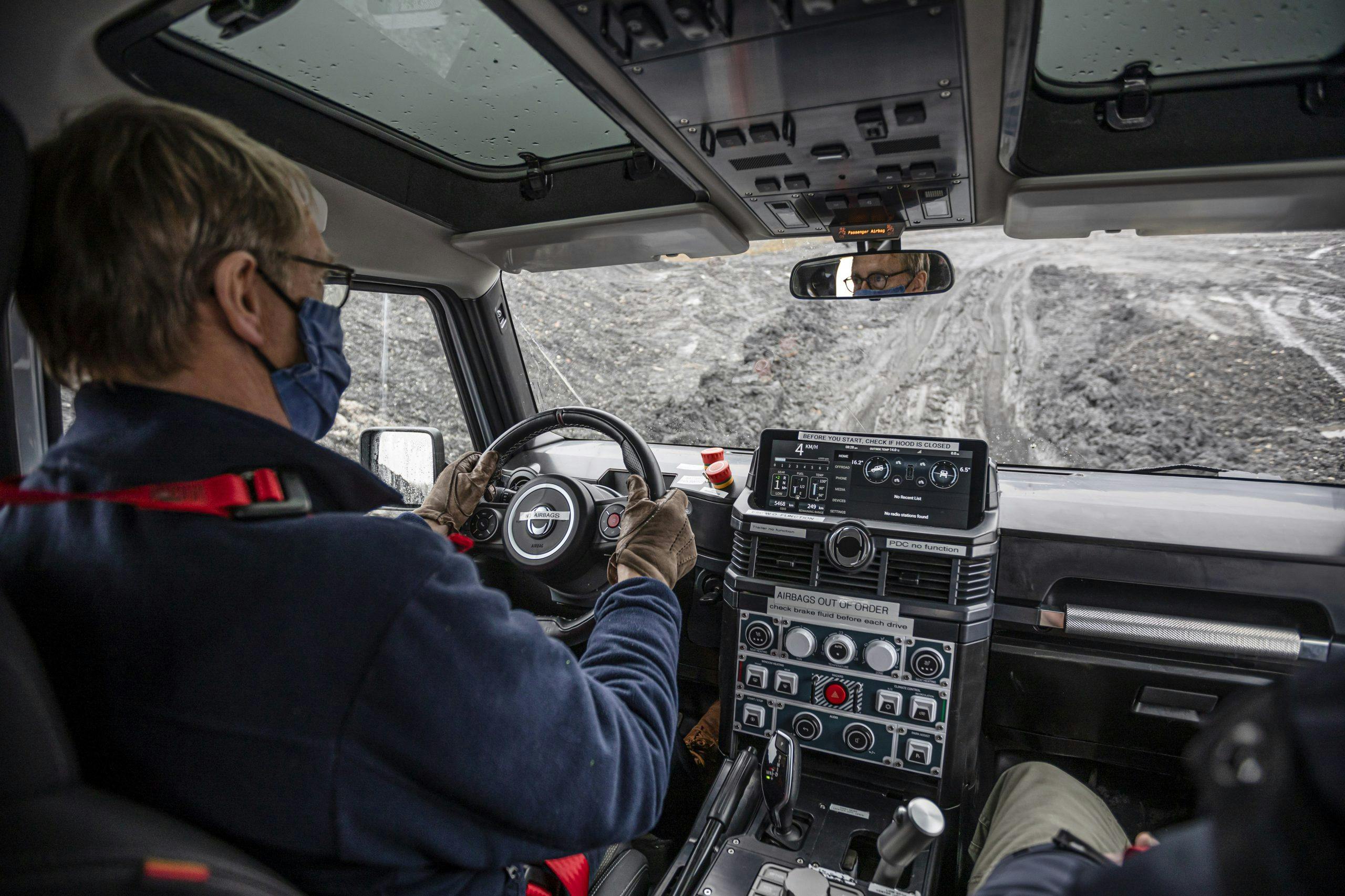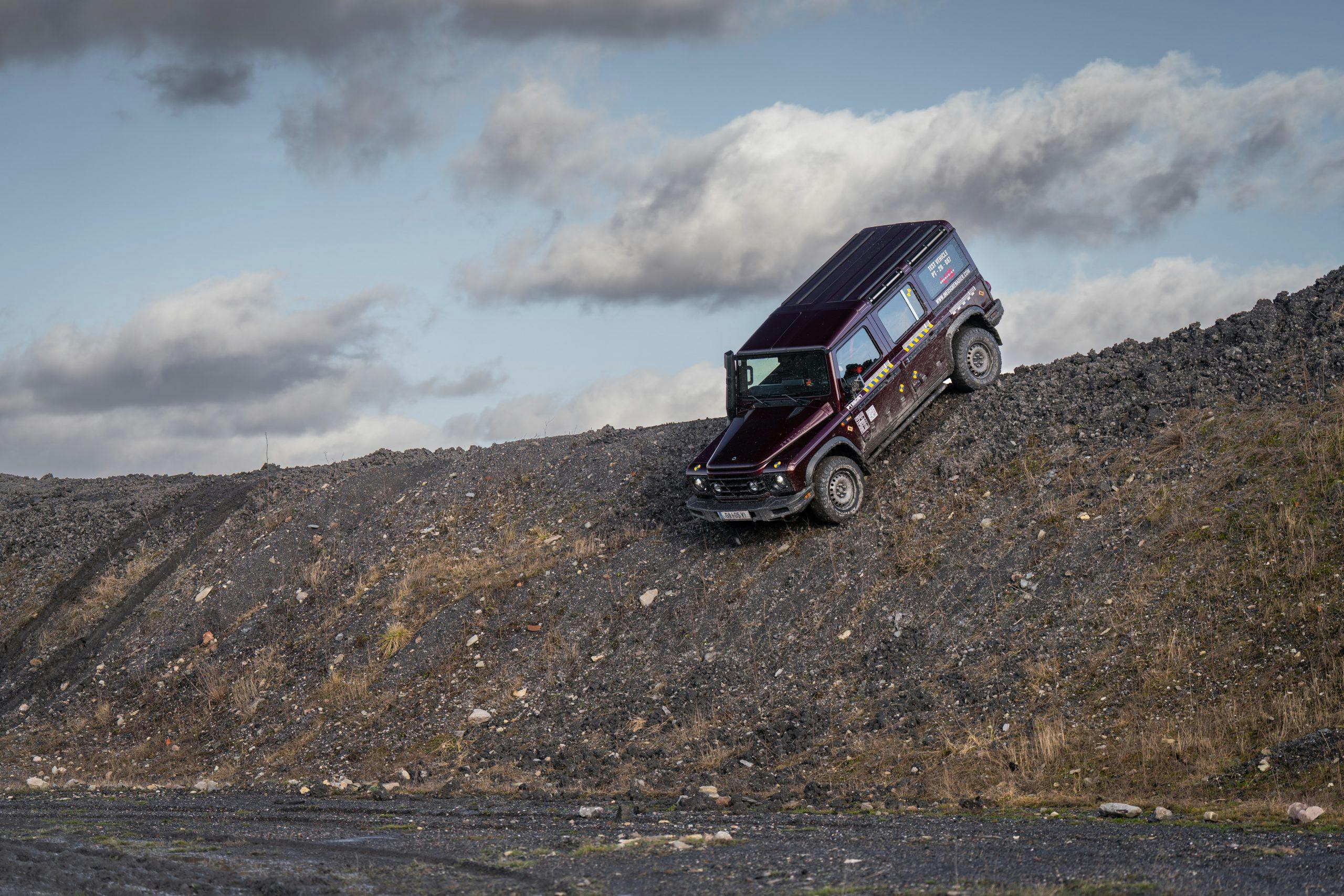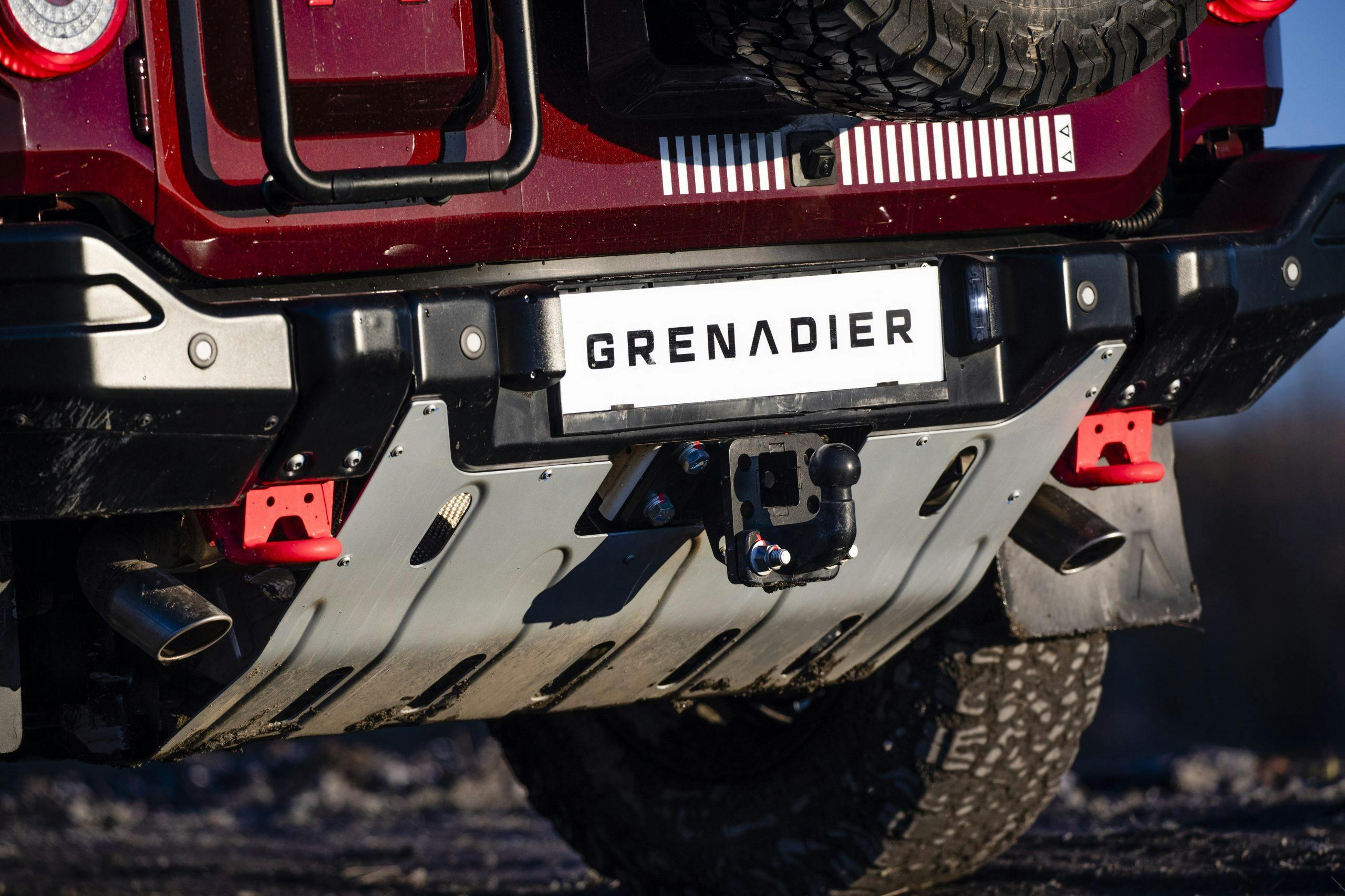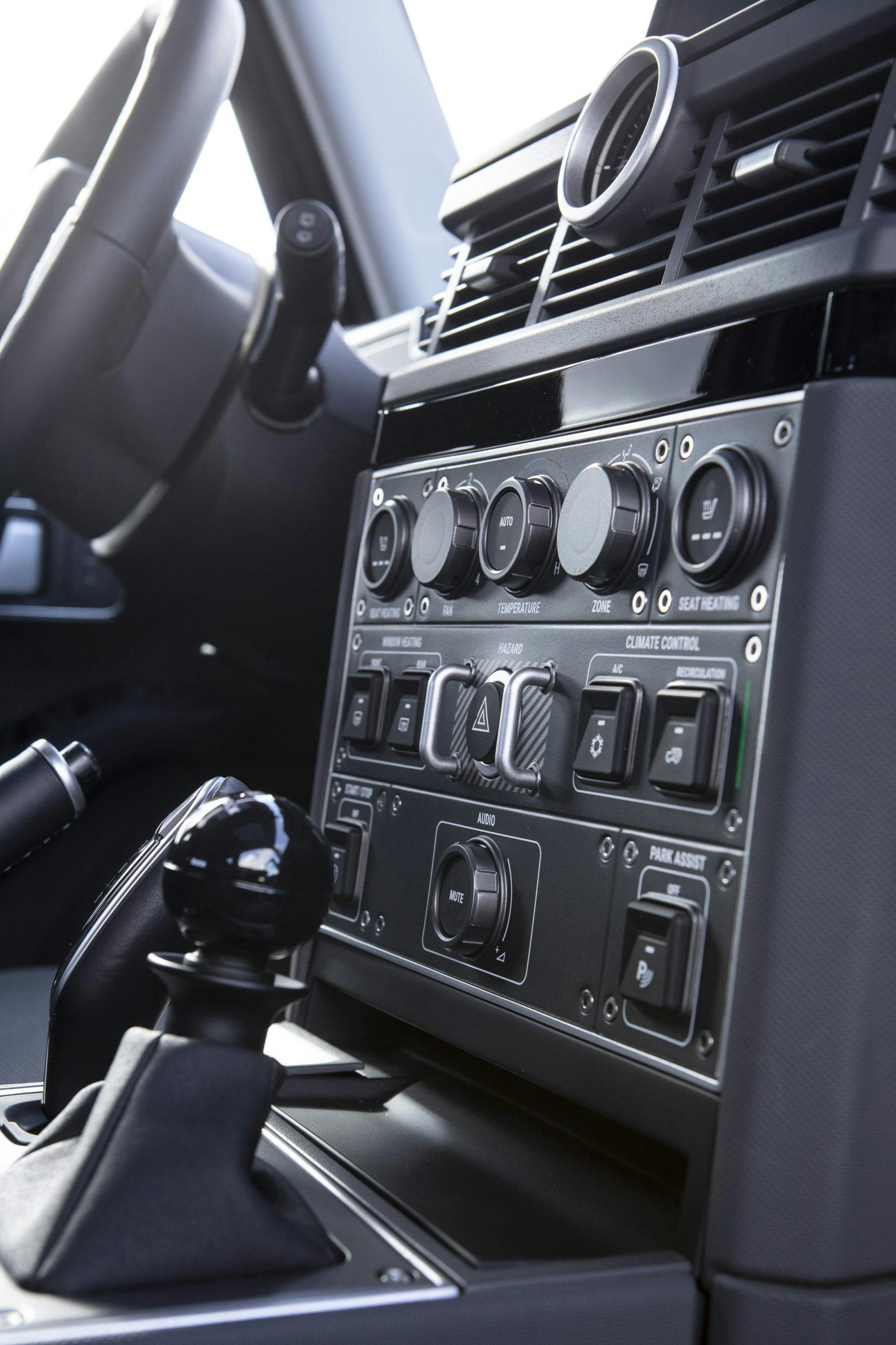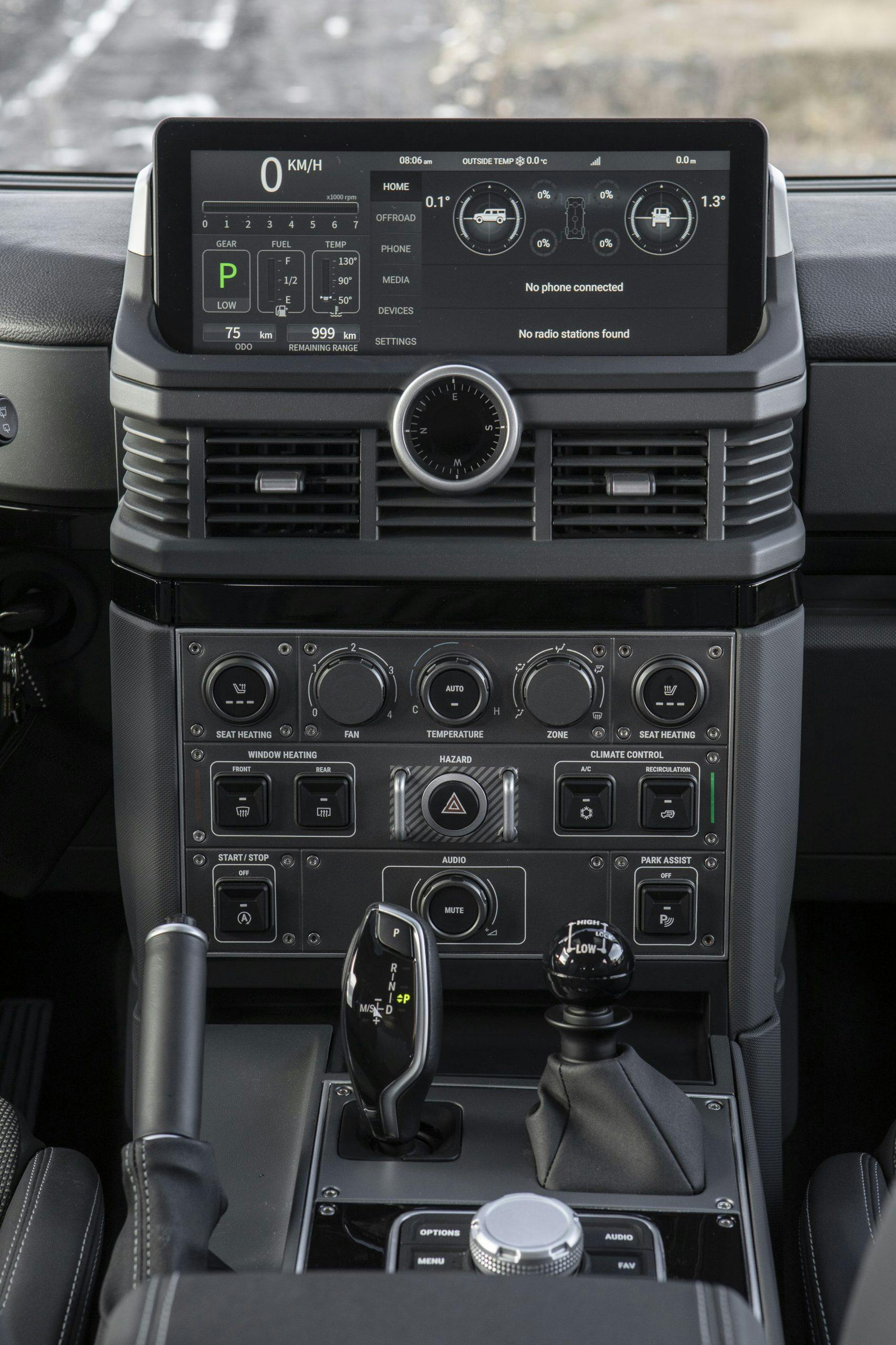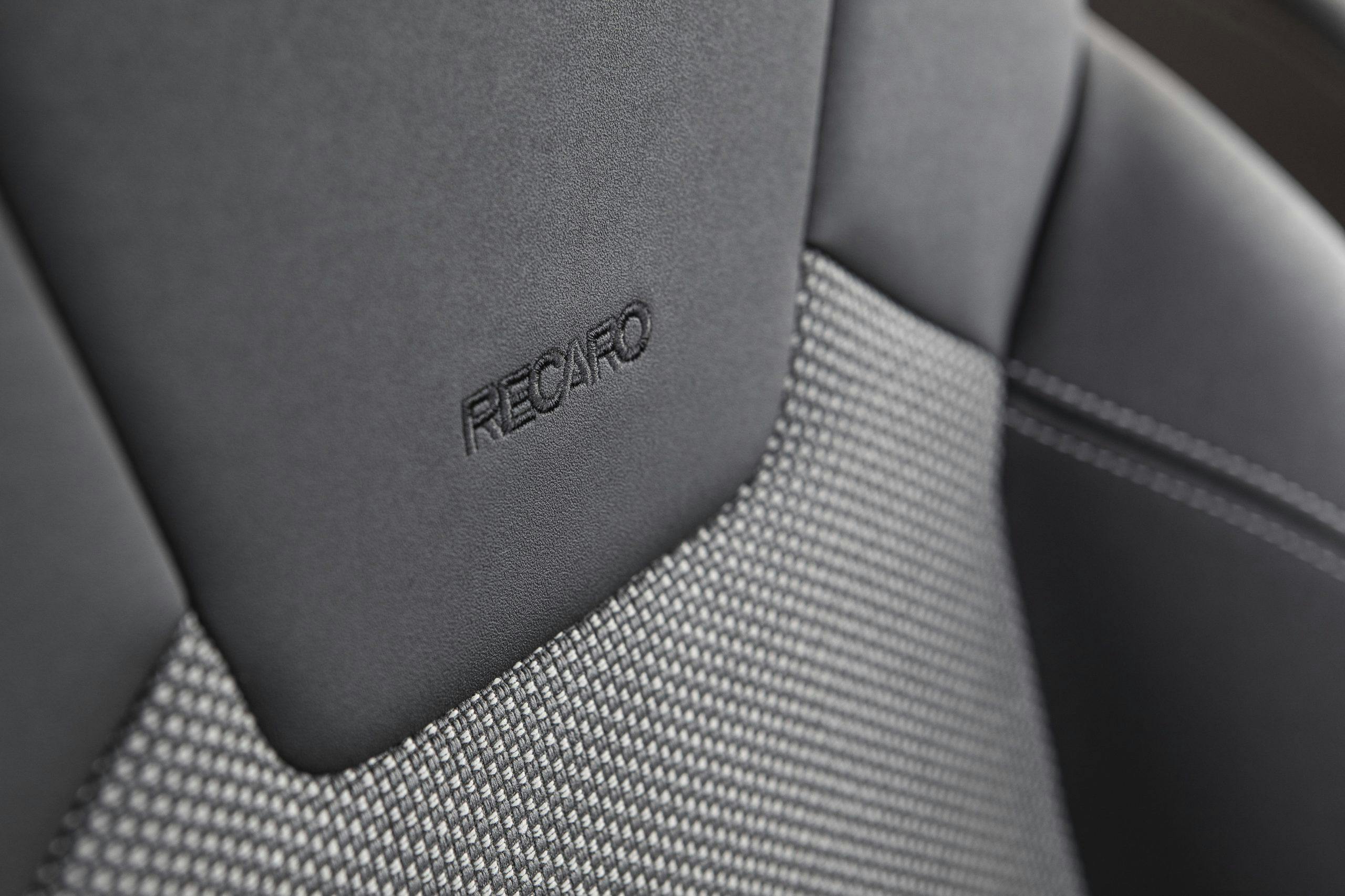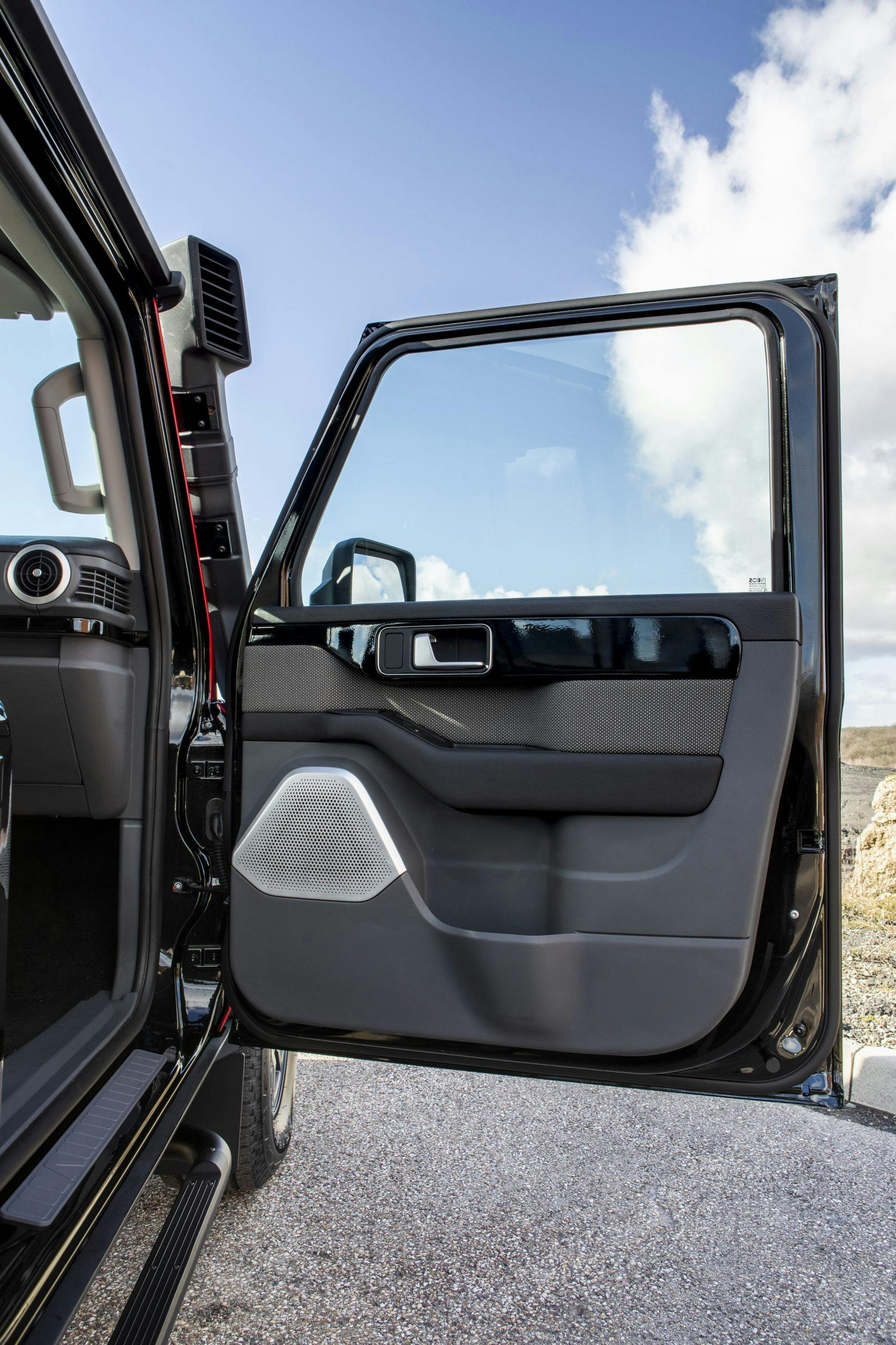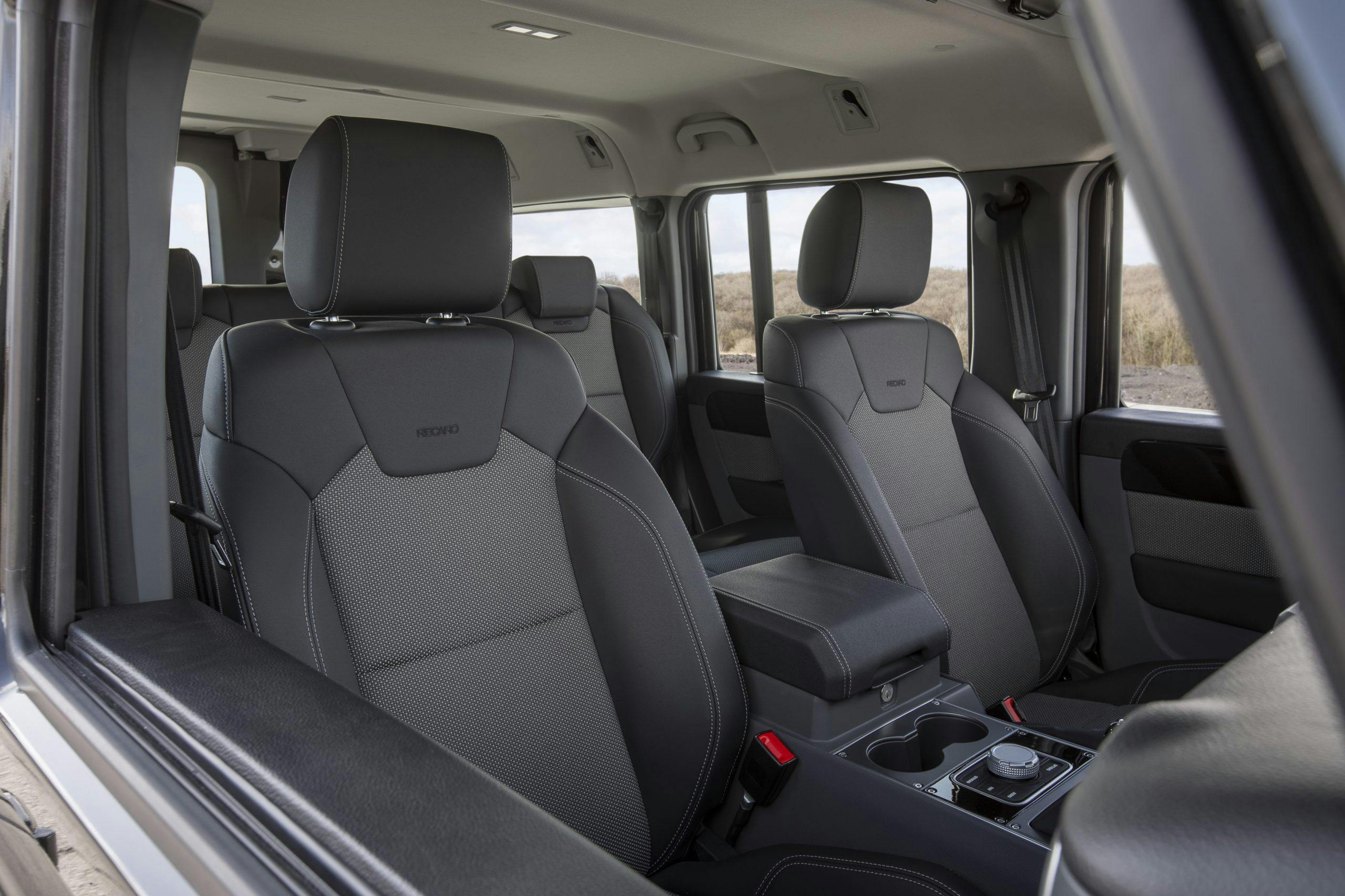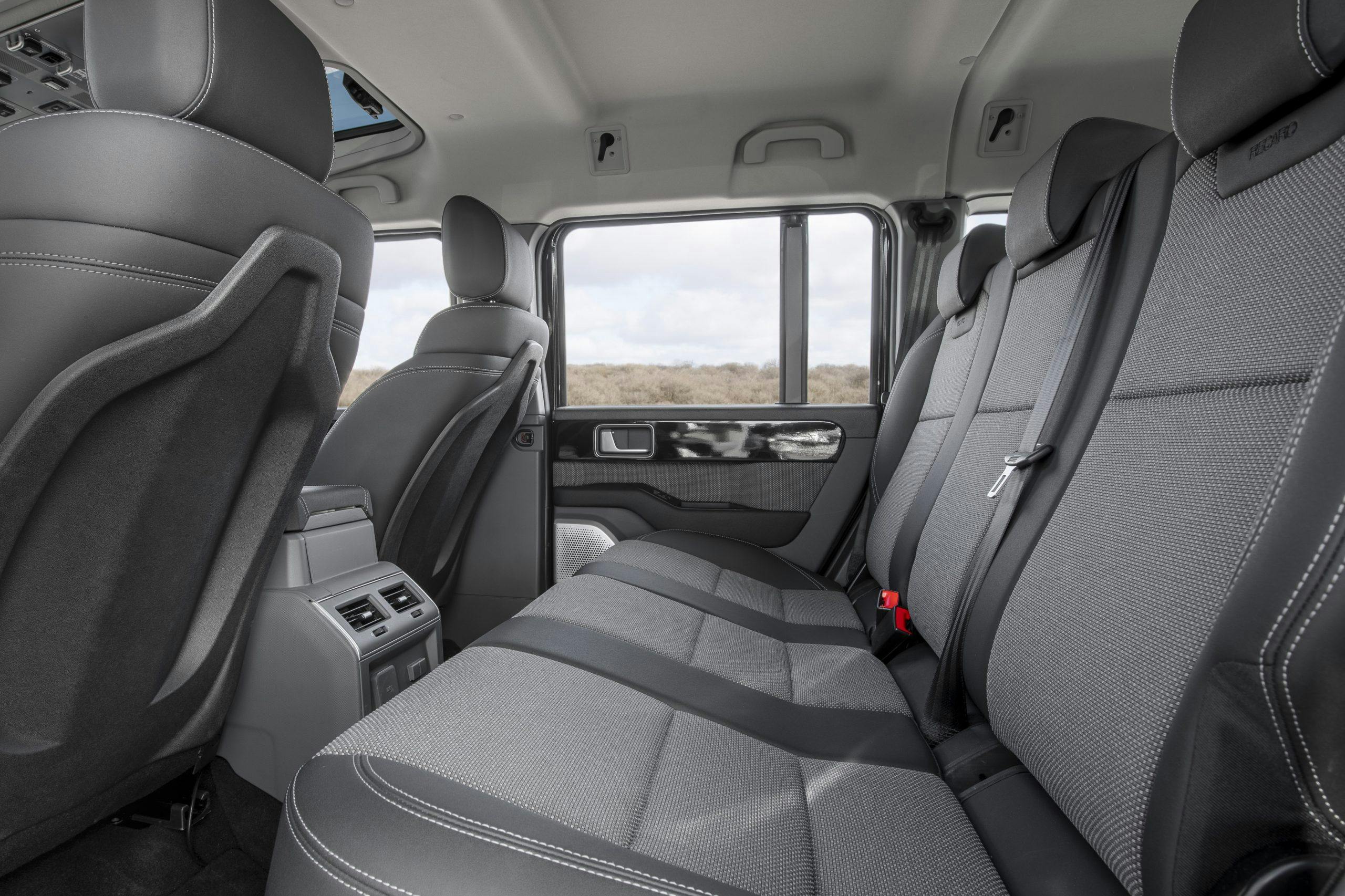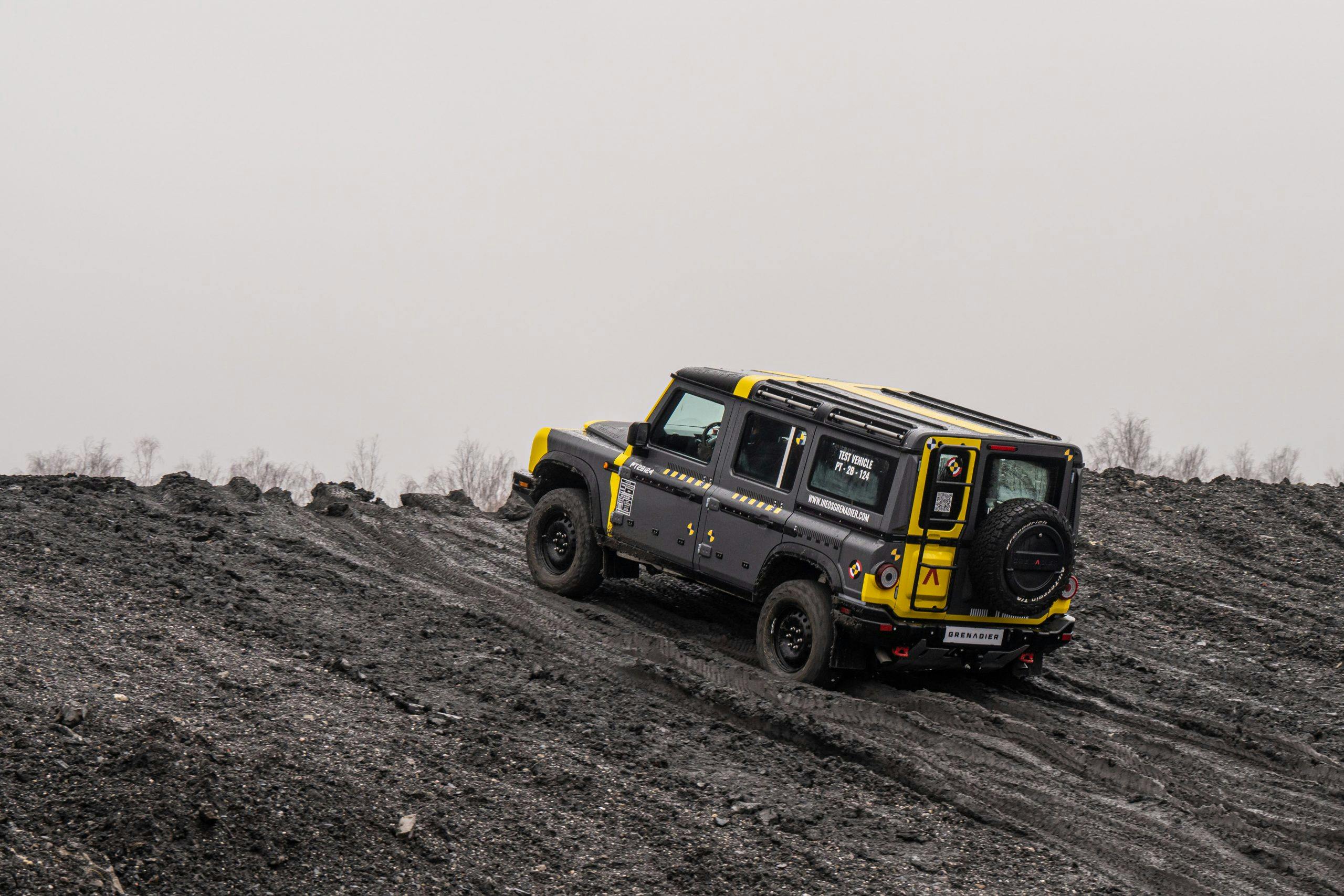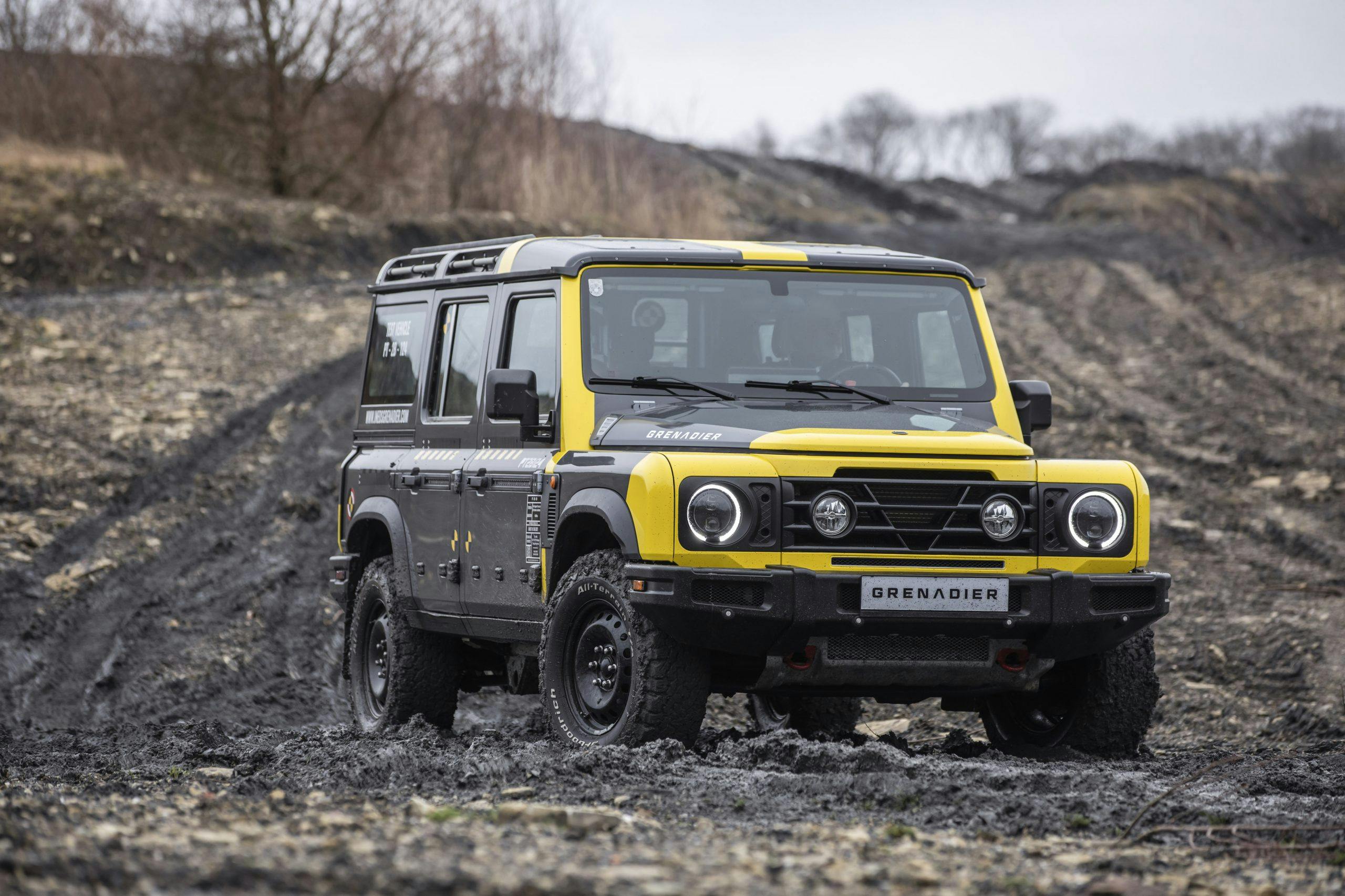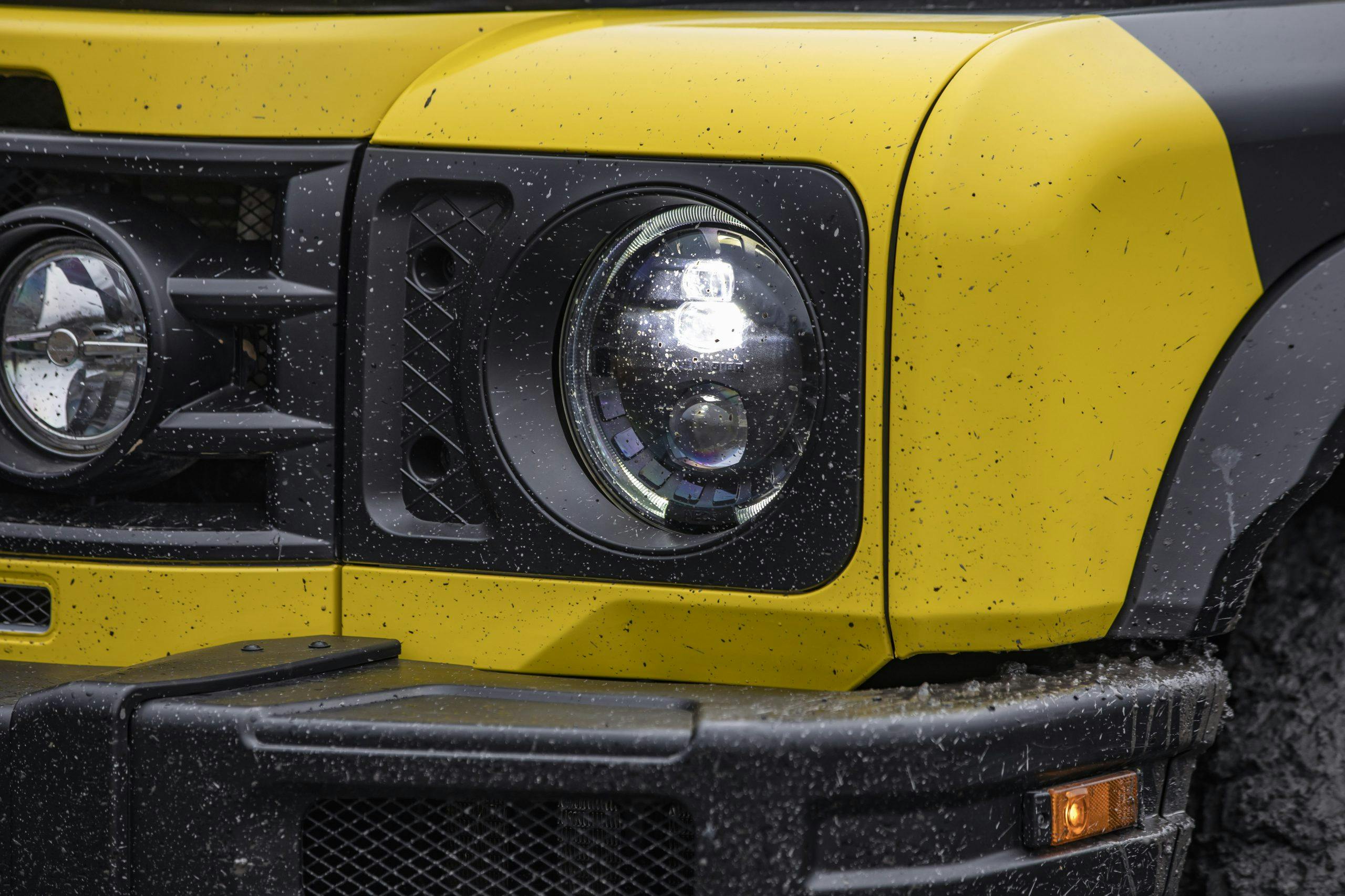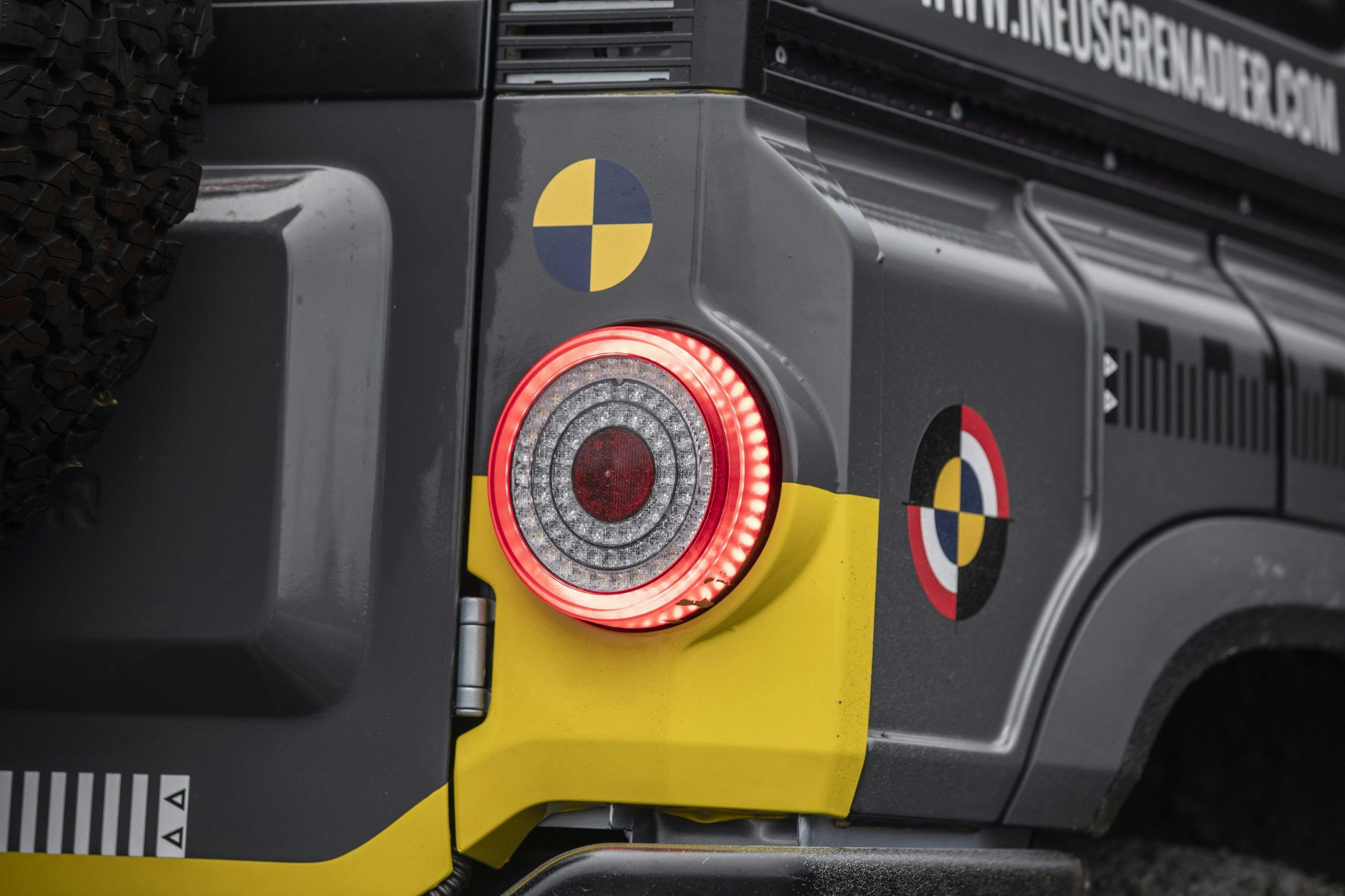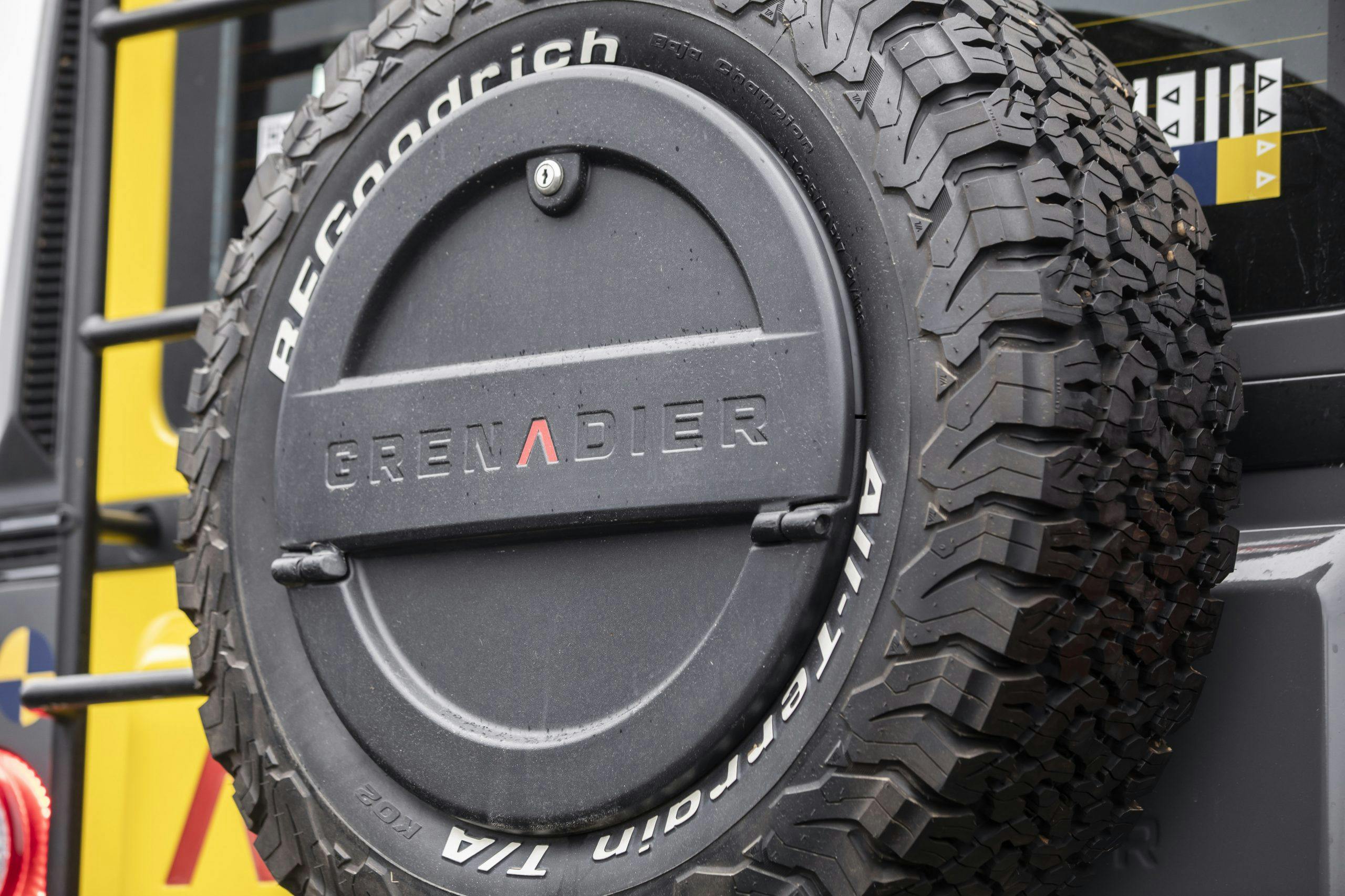Prototype Review: Ineos Grenadier 4×4
Three men walk into a bar… Sounds like a joke, doesn’t it? But from the driver’s seat, the new Ineos Grenadier feels anything but.
Ahead is a great sea of mud—spoil from a worked-out iron-ore mine in the Alsace-Lorraine area close by the Hambach, France, production home of the new Ineos Grenadier 4×4. We’re supposed to get across this ooze, which would challenge even the hardiest of Land Rover Defenders (the latest of which we reviewed here) or Toyota Land Cruisers.
The bar? The Grenadier in Wilton Row, Belgravia, though history doesn’t identity the drinking partners of the chemicals billionaire and Ineos CEO Sir Jim Ratcliffe, although like the best plans, that’s where the idea of the Grenadier 4×4 utility was first mooted.
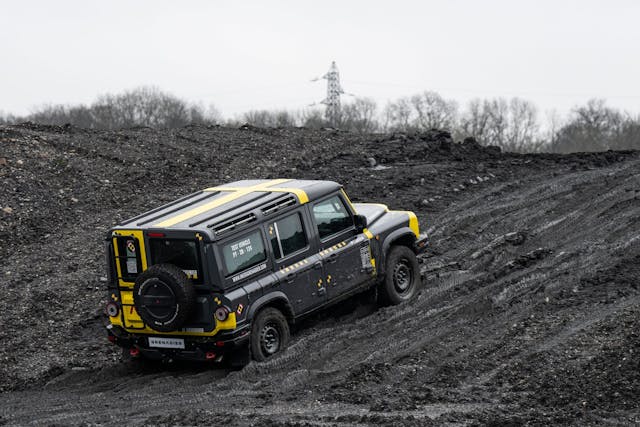
Sir Jim had already been turned down by Land Rover when he asked again about the possibility of buying the tooling for the long-lived Defender, which went out of production in 2016 after 68 years of carrying the flag into some of the most difficult terrains across the globe, if not always carrying the flag out again. There remained an element of unfinished business, here.
The new Defender is quite unlike the old, employing an aluminum monocoque, based on a much-strengthened Range Rover Sport frame. While that gives the Defender better road manners, there are markets where toughness counts for more. Think of utilities, like the electrical suppliers whose linesmen and women will have been busy last weekend; agriculture; soft-skinned military fleets; industrial plant; mining; and the rescue and emergency services. With a financial breakeven figure of between 25,000 and 35,000 Grenadier models a year, it’s hardly a big footprint into a small but significant specialist market, though Ineos is also keen to sell its off roader to Mayfair farmers who need to take their little darlings to school in a car capable of crossing the snowy Cairngorms.
Why Hambach?

Ineos purchased the Hambach plant purchased 18 months ago. Sited close to the French/German border on what has historically been disputed ground, this was and still is the 82-hectare Mercedes-Benz Smart plant, opened with much fanfare by German Chancellor Kohl and French president Chirac in October 1997 and which, in the meantime, has produced four generations of Smart cars for the three-pointed star.
There’s been a lively debate about whether Ineos should have kept to its original plan to produce the cars from a £600 million ($800M) Bridgend site in Wales, but what most of the arguments don’t account for is that Mercedes had already spent nearly half a billion euros upgrading the plant to produce the EQB electric SUV before changing its mind and selling.

It would have been a brave decision to turn down a highly experienced workforce of 1300 ex-Mercedes-Benz staff, a pretty much ready-made production facility for a big SUV, robots and precision measuring machines galore, plus contracts to continue to produce cars for Mercedes-Benz. Ineos has already built 20,000 Smart cars for Mercedes and is contracted to produce Smart EV until 2024 and EQB panels until that model’s life ends in 2027.
Not that adapting the production line to the 194-inch long and 76-inch wide Grenadier (for which a curb weight rather ominously hasn’t been disclosed), hasn’t cost a lot, €50 million ($55.6M) in fact, with changes and reinforcement to the X-shaped production line, the vehicle carriers, and even the buildings to suit.
Under the skin

The Grenadier is based on a massive, ladder-frame separate chassis, all Metal Inert Gas (MIG) welded and fully-flitch-plated, with side members up to six inches deep. In other words, it’s built tough. Coil springs and telescopic dampers keep the Carraro-developed front and rear solid axles in check and the drivetrains slot in on top before the body is lowered into place on the production line. The engine family comes from BMW, comprising a 3.0-liter straight-six available with a twin-turbo 245-hp and 406 lb-ft diesel, or with 281-hp and 332 lb-ft single-turbo gas engine. The gearbox is a ZF eight-speed automatic. The Grenadier boasts permanent four-wheel drive, with a two-speed transfer case, a standard locking center differential, and optional locking differentials in the front and rear.
Wheel choice is between 17 and 18 inches with Bridgestone all-terrain, all-season tires and optional BF Goodrich KO2 off-road rubber.
For the off-roaders amongst you, the ground clearance is 10.4 in, wading depth is 31.5 in, the approach, breakover and departure angles are, respectively, 35.5 degrees, 28.2 degrees and 36.1 degrees. Oh, and it’ll tow up to nearly 4 tons.
Across the ooze?

The trucks we drove were very early prototypes with roll cages and early versions of designer Toby Ecuyer’s big-button interior. Ecuyer used marine and plant equipment as inspiration for the fascia and it’s certainly different from rivals from German firms. All the switchgear appears huge as if built for giants, but the Recaro seats are comfortable and supportive. It’s easy to see out to the front and sides, and the door mirrors offer a panoramic rearward view.
A pull on the BMW gear lever into Drive is all it takes to move the big transfer box into Low and trundle off. This is the long-wheelbase station wagon, although it doesn’t have the optional locking differentials at each end. All the same, it proves surprisingly adept across this black mud, which quickly fills the tread blocks in the dual-purpose BF Goodrich All-Terrain tires on 17-inch steel rims, leaving any sort of grip at a premium.
Even with the chassis grounding out on the central land, the wheels continue to trundle as the gas straight-six drives us at idle speeds at less-than walking pace. Some of the slopes are steep and as slippery as dropped ice cream. In these circumstances you’d probably choose to lock at least the rear wheels together to ensure the action of the rear differential doesn’t just facilitate runaway wheelspin on the side with least grip. Nevertheless, the Grenadier rumbles through some pretty treacherous conditions and only occasionally would you wish for the turbodiesel engine which would give even better low-speed mud plugging.
Get too enthusiastic and the ZF shifts down and spins up the tires, but it does have a manual override for getting down the steeper slopes in control. One weak spot is the steering, which is long-geared with little self-centering or feedback. It’s difficult to determine where straight ahead is on this mud, and you can end up traveling with a dose of lock on, which can rapidly bring the vehicle to a halt.
Donna Falconer, head of product at Ineos, agrees that the steering on these very early prototypes isn’t particularly communicative. “I’ve driven some of the Production Try Out 1 (PTO1) cars, which are several stages down the process of development,” she says, “and they are a lot better.”
Disc brakes all around are powerful, which you’d expect, but even with the discs covered in mire the grab at the top of the pedal is impressive and the progression as you push harder is full of feedback.
Verdict

Clearly this was a very limited acquaintance and only indicative of the Grenadier’s capabilities in black mud that would suck your wellies clean off. Yet the fact that these early prototypes felt strong and capable (not to mention water-and-mud tight with nicely installed drivetrains) was at the very least promising.
There’s lots to do before the vehicle goes on sale later this year in Europe, and North America will have to wait until 2023. Work ahead includes a wide range of different sorts of dealers to recruit, including agricultural merchants and BMW dealerships.
Prices will start at £48,000 including VAT) for the two-seat commercial and the five-seat versions will be in “the early fifties,” says Gary Pearson, head of sales and marketing. There’s no word yet on base pricing in the U.S., where only the gas engine will be offered, but $65,000 – $75,000 is a reasonable estimate. “Trims and options will be straight forward and honest,” Pearson says. “There’ll be no pricing where you end up miles away from that starting price and you won’t be adding tens of thousands of pounds to get to where you want to be.”
Built in France, engineered in Austria with parts from Italy and Germany, and owned by a British company, there’s no doubt that the Grenadier will get you to where you want to be wherever that is in the world, but there are still questions to answer. Key amongst these is whether it will have the reliability standards exacting customers demand (and which the old Defender struggled to match). Whether there are enough folk in the world wanting this sort of capability at this sort of price is another question. Failure on either test could turn the Grenadier into a not-terribly funny barroom punchline; let’s hope that doesn’t happen.
2023 Ineos Grenadier 4×4 (Prototype)
Price: TBD for USA ($65,000– $75,000 est.)
Highs: Rock-solid, no-nonsense engineering on a proven off-road platform. Strong brakes, stout powertrain.,
Lows: Lackluster steering still needs some fine tuning to improve feel.
Summary: An all-new old-school Defender built to conquer serious terrain, for a not-astronomical price.


